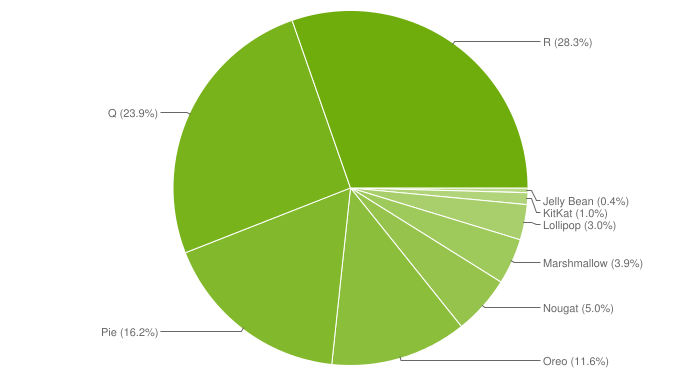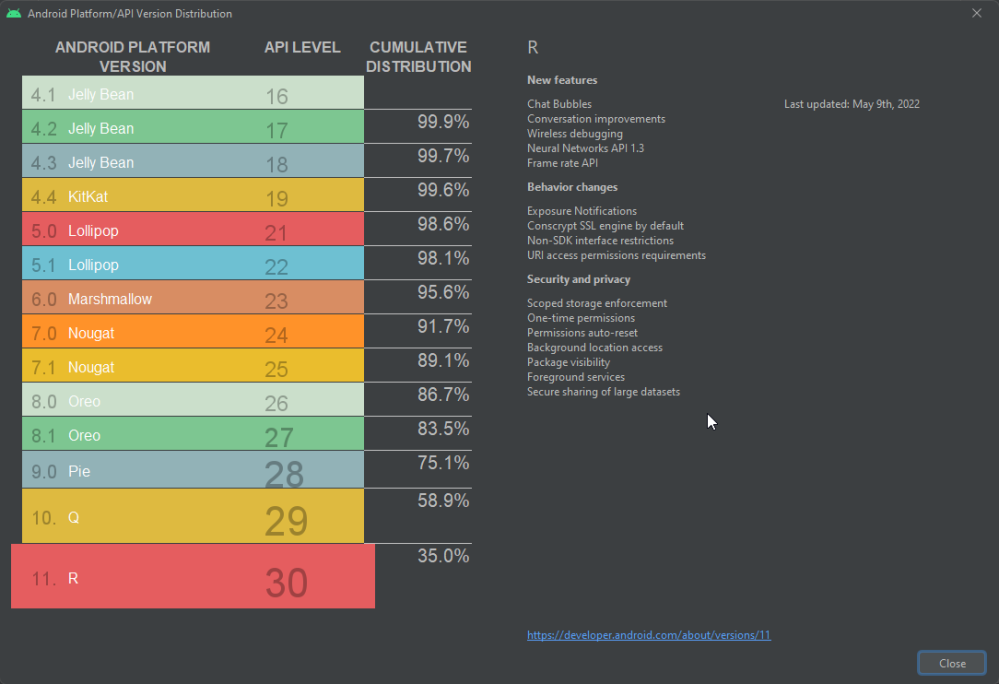
Google has updated its chart showing the percentage of Android devices running various versions of the OS, but there are still no details about Android 12’s adoption rate.
Historically, Google freely offered this info on the web in the form of a frequently updated pie chart, assigning a percentage to each version of Android. However, this data ended up working against Google, being used to contrast Apple’s much faster adoption rate for new versions of iOS. With time, this chart became far less frequently updated, and was ultimately taken down.
More recently, Google has taken a new tack with the Android distribution chart, putting the info into Android Studio in a way that shows what percentage of devices are on a particular version or newer. Android Studio’s chart is now updated roughly every six months to a year, with the previous update arriving in November and a new version appearing on May 9.
According to the new distribution data for 2022 (which we’ve conveniently arranged into a pie chart, below), devices on Android 11 and newer now make up the biggest single slice of the pie at 28.3%, up from 24.2%. This is honestly no surprise, given the popularity of Samsung devices and how the company keeps even its affordable devices updated, even up to Android 12.


To match that, the share of devices still on Android 10 has shrunk down to 23.9% versus its 26.5% share in November. Down the line, each older version of Android has seen a similar decrease in usage, with Jelly Bean usage now down below half of one percent.
The lack of Android 12 statistics in this latest chart is likely related to its intended purpose for Android developers. Rather than serve as a guideline of what Android API your app should target — the Play Store handles this with its minimum API requirements — the chart in Android Studio is meant to help developers decide which versions of Android should be supported at all.
Using the chart, developers can know what percentage of potential customers they may lose by not supporting an older Android version. For that purpose, knowing how many users are on Android 12 or 12L is not particularly relevant. That said, the data would be quite interesting to see, especially as information for Android 12 and 12L would be separated since they use different API versions.
Thanks tipster!
More on Android:
- Nothing Phone (1): What to expect from Android’s newest entrant [Video]
- ‘Protected by Android’ is Google’s new security branding for the OS
- Here’s every device currently eligible for the Android 13 Beta
Author: Kyle Bradshaw
Source: 9TO5Google



